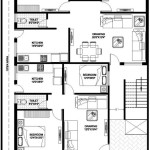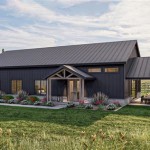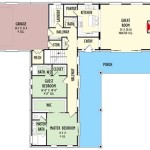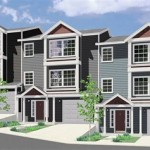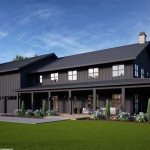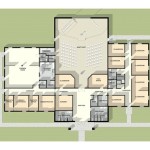Modern House Plans Under 1000 Sq Ft: Efficiency and Style in Compact Living
The increasing demand for sustainable and affordable housing has spurred significant interest in modern house plans under 1000 square feet. These compact designs prioritize efficient use of space, incorporating contemporary architectural styles and smart technology to create comfortable and aesthetically pleasing living environments. This article explores the key considerations, benefits, and design trends associated with modern small house plans, highlighting how they cater to diverse needs and lifestyles.
Modern house plans under 1000 sq ft represent a significant departure from traditional housing models. They challenge the notion that bigger equals better, focusing instead on optimizing functionality within a smaller footprint. These designs are particularly appealing to individuals, couples, and small families seeking cost-effective housing options, as well as those who prioritize minimalist lifestyles and environmental sustainability. The appeal of simplicity and reduced maintenance further contributes to the growing popularity of these compact dwellings.
The development of modern house plans under 1000 sq ft is heavily influenced by several factors. The rising cost of land and construction materials makes smaller homes a financially viable option for many. Furthermore, growing awareness of the environmental impact of large homes encourages individuals to embrace more eco-friendly living practices. Technological advancements in building materials and design software have also played a crucial role, enabling architects and designers to create innovative and space-efficient layouts.
Key Considerations in Designing Small Modern Homes
Designing a modern house plan under 1000 sq ft requires careful planning and attention to detail. The limited space necessitates strategic decisions regarding layout, storage, and functionality. Maximizing natural light, incorporating multi-functional spaces, and selecting appropriate materials are crucial for creating a comfortable and livable environment. The following aspects are essential to consider during the design process.
Layout and Spatial Efficiency: The layout of a small home should prioritize open-concept living, minimizing the use of walls and partitions to create a sense of spaciousness. Strategies such as combining the living room, dining area, and kitchen into a single open space can significantly enhance the perceived size of the home. Vertical space should also be utilized effectively, with high ceilings and loft areas providing additional storage or living space. A well-defined circulation path is crucial for ensuring easy movement throughout the home.
Storage Solutions: Adequate storage is critical in a small house to prevent clutter and maintain a sense of order. Built-in storage solutions, such as cabinets, shelves, and drawers, should be integrated into the design to maximize space utilization. Multi-functional furniture, such as sofa beds and storage ottomans, can further contribute to efficient space management. Utilizing wall space for vertical storage is also a practical approach, allowing for the organization of books, decorative items, and other belongings.
Natural Light and Ventilation: Natural light and ventilation are essential for creating a comfortable and healthy living environment. Large windows and skylights should be incorporated into the design to maximize the amount of natural light entering the home. Proper ventilation is crucial for maintaining air quality and preventing moisture buildup. Cross-ventilation, achieved by strategically positioning windows and doors, can effectively circulate air throughout the home. The orientation of the house should also be considered to optimize solar gain during the winter months and minimize overheating during the summer.
Benefits of Opting for a Small Modern House
Choosing a modern house plan under 1000 sq ft offers numerous benefits, ranging from financial savings to environmental responsibility. These compact homes provide a cost-effective and sustainable alternative to traditional housing, appealing to individuals who value simplicity, efficiency, and a reduced environmental footprint. The advantages of small house living extend beyond mere economics, influencing lifestyle and personal values.
Affordability: Small homes are significantly more affordable than larger houses, both in terms of initial construction costs and ongoing expenses. The smaller footprint requires less land, fewer building materials, and reduced labor costs, resulting in substantial savings. Lower property taxes, utility bills, and maintenance costs further contribute to the long-term financial benefits of small house living. This affordability makes homeownership more accessible to a wider range of individuals and families.
Environmental Sustainability: Small houses have a significantly lower environmental impact than larger homes. They require less energy for heating and cooling, reducing carbon emissions and conserving natural resources. The smaller size necessitates the use of fewer building materials, minimizing waste and promoting sustainable construction practices. Small house living encourages a minimalist lifestyle, reducing consumption and promoting resource conservation. The possibility of incorporating sustainable materials, such as reclaimed wood and recycled content, further enhances the environmental benefits.
Reduced Maintenance: The smaller size of a modern house under 1000 sq ft translates to reduced maintenance requirements. Less square footage means less cleaning, fewer repairs, and lower upkeep costs. This allows homeowners to spend more time on activities they enjoy, rather than being burdened by home maintenance tasks. Reduced yard work also contributes to the overall convenience and ease of small house living. This is particularly appealing to individuals with busy lifestyles or those seeking a low-maintenance living environment.
Design Trends in Modern Small House Plans
Modern house plans under 1000 sq ft are constantly evolving, reflecting contemporary design trends and technological advancements. Architects and designers are exploring innovative ways to maximize space, enhance functionality, and create aesthetically pleasing small homes. Several key design trends are shaping the future of small house living.
Minimalist Aesthetics: Minimalism is a defining characteristic of modern small house design. Clean lines, simple forms, and a focus on functionality are hallmarks of this aesthetic. Clutter is minimized, and a sense of order and tranquility is prioritized. Neutral color palettes, natural materials, and carefully curated furnishings contribute to the overall minimalist effect. This approach not only enhances the visual appeal of the home but also promotes a sense of calm and well-being.
Smart Home Technology: Smart home technology is increasingly integrated into modern small house plans, enhancing convenience, efficiency, and security. Smart lighting systems, thermostats, and appliances can be controlled remotely, optimizing energy consumption and improving comfort. Security systems, including smart locks and surveillance cameras, provide added peace of mind. Voice-activated assistants, such as Amazon Alexa and Google Assistant, can further automate tasks and streamline daily routines. This integration of technology enhances the livability and functionality of small homes.
Outdoor Living Spaces: Extending the living space to the outdoors is a popular trend in modern small house design. Decks, patios, and balconies provide opportunities for relaxation, entertainment, and connection with nature. Outdoor kitchens and dining areas can expand the functionality of the home, allowing for al fresco dining and gathering with friends and family. Landscaping plays a crucial role in creating a seamless transition between indoor and outdoor spaces. Small gardens, potted plants, and vertical gardens can add beauty and greenery to the outdoor environment, enhancing the overall appeal of the home.
In conclusion, modern house plans under 1000 sq ft offer a compelling alternative to traditional housing, providing a cost-effective, sustainable, and stylish living option. By prioritizing efficient use of space, incorporating contemporary design principles, and embracing smart technology, these compact homes cater to the diverse needs and lifestyles of individuals, couples, and small families. As the demand for affordable and sustainable housing continues to grow, the popularity of modern small house plans is likely to increase, shaping the future of residential architecture.

10 Modern Under 1000 Square Feet House Plans Craft Mart

Our Top 1 000 Sq Ft House Plans Houseplans Blog Com

Our Top 1 000 Sq Ft House Plans Houseplans Blog Com

10 Modern Under 1000 Square Feet House Plans Craft Mart

House Plans Under 1000 Sq Ft 2 Bedrooms Bathroom Granny

Our Top 1 000 Sq Ft House Plans Houseplans Blog Com

Fascinating Modern House Plans Under 1000 Sq Ft Garden Home Square Feet Plan S Small Floor Cottage

10 Modern Under 1000 Square Feet House Plans Craft Mart

7 Ideal Small Houses Floor Plans Under 1000 Square Feet House Cottage

Best Ing House Plans 1000 To 1499 Square Feet

